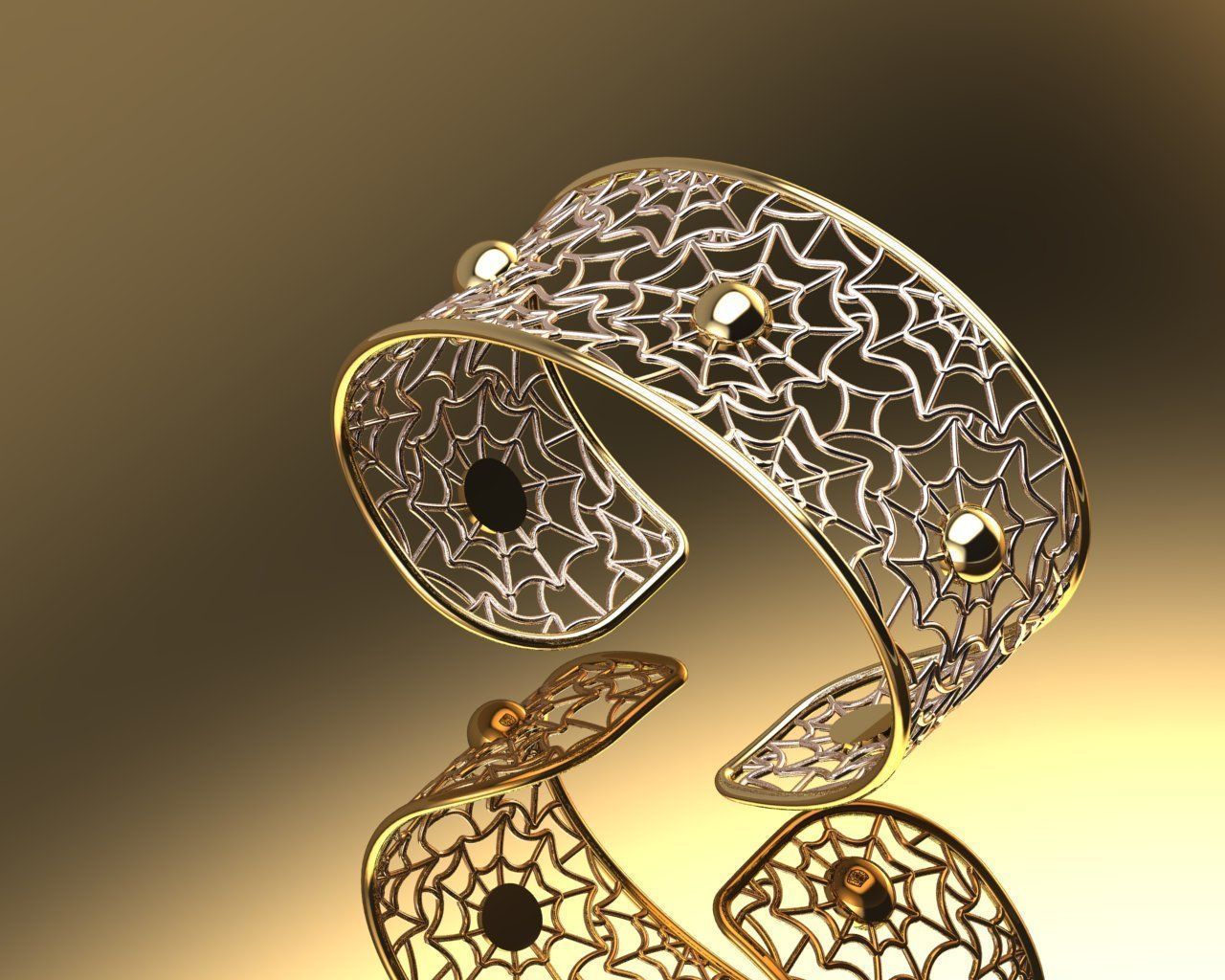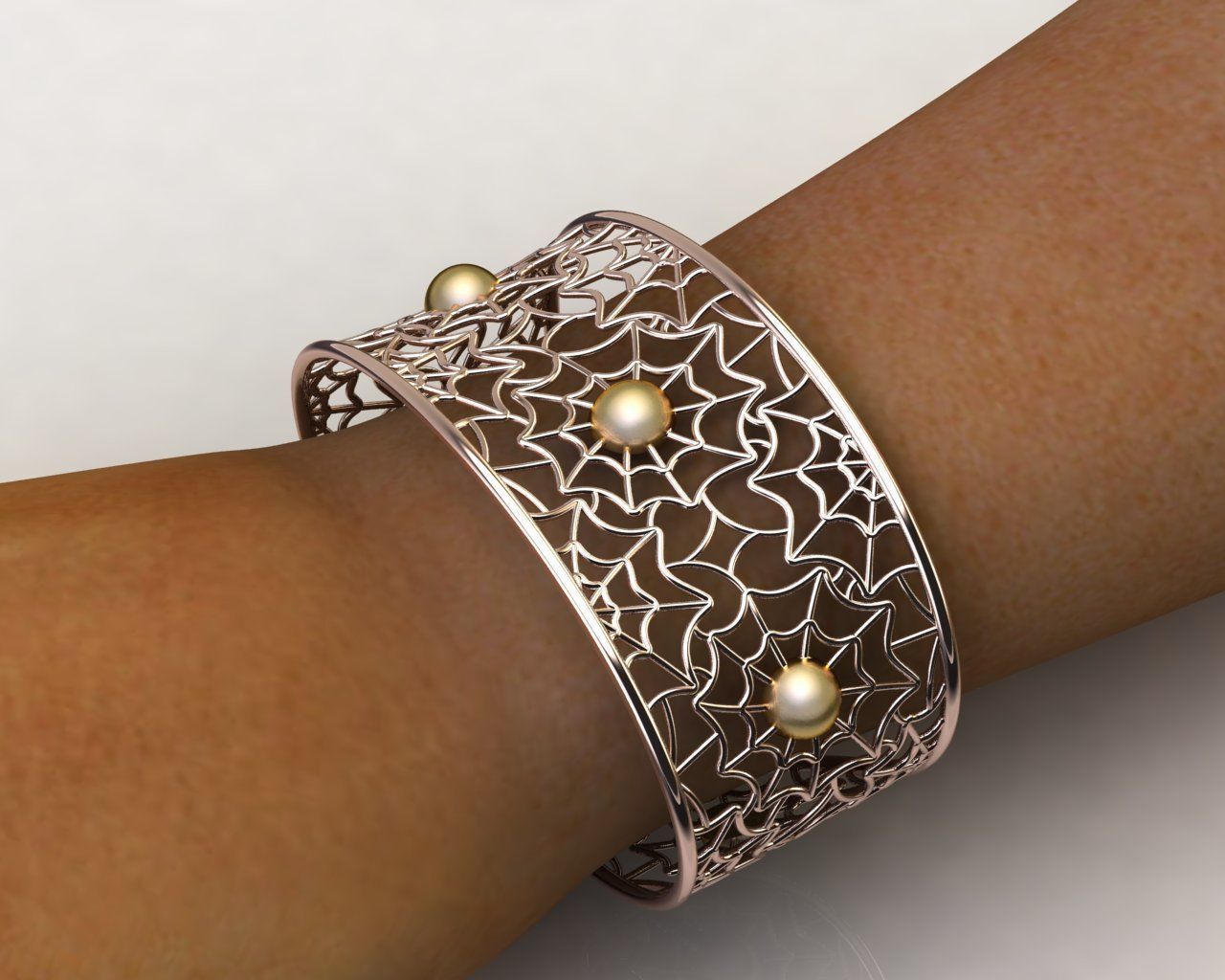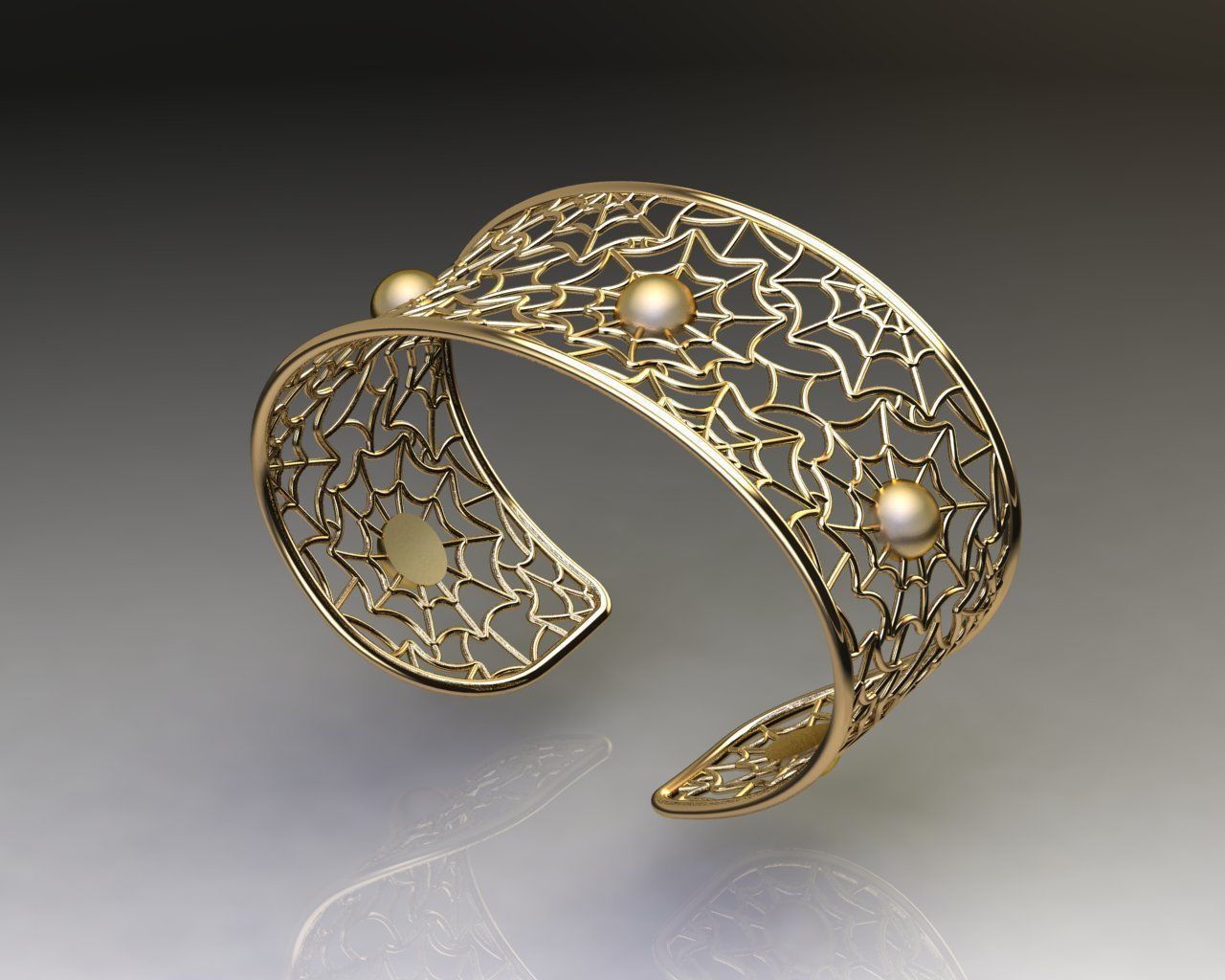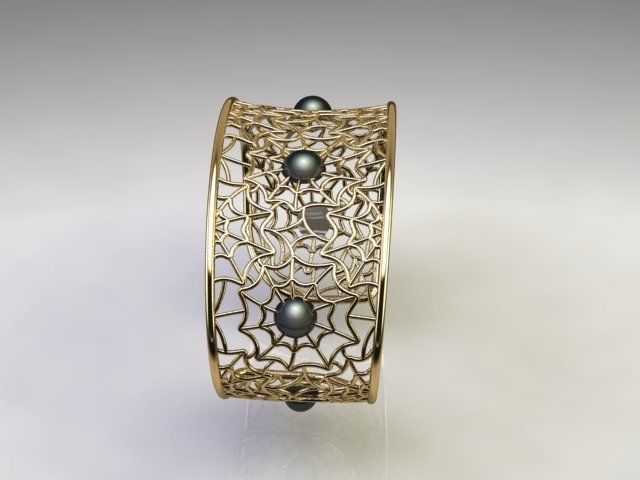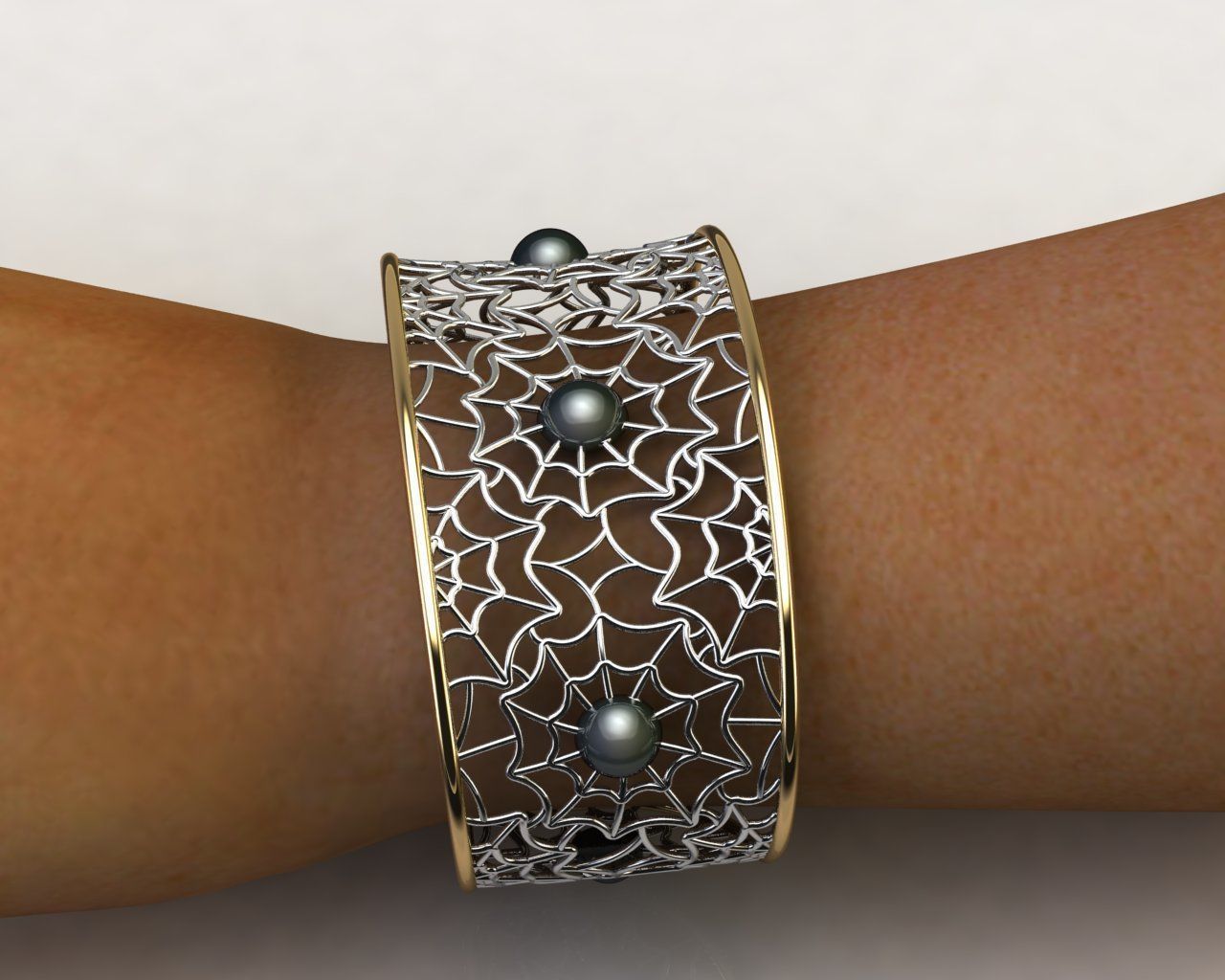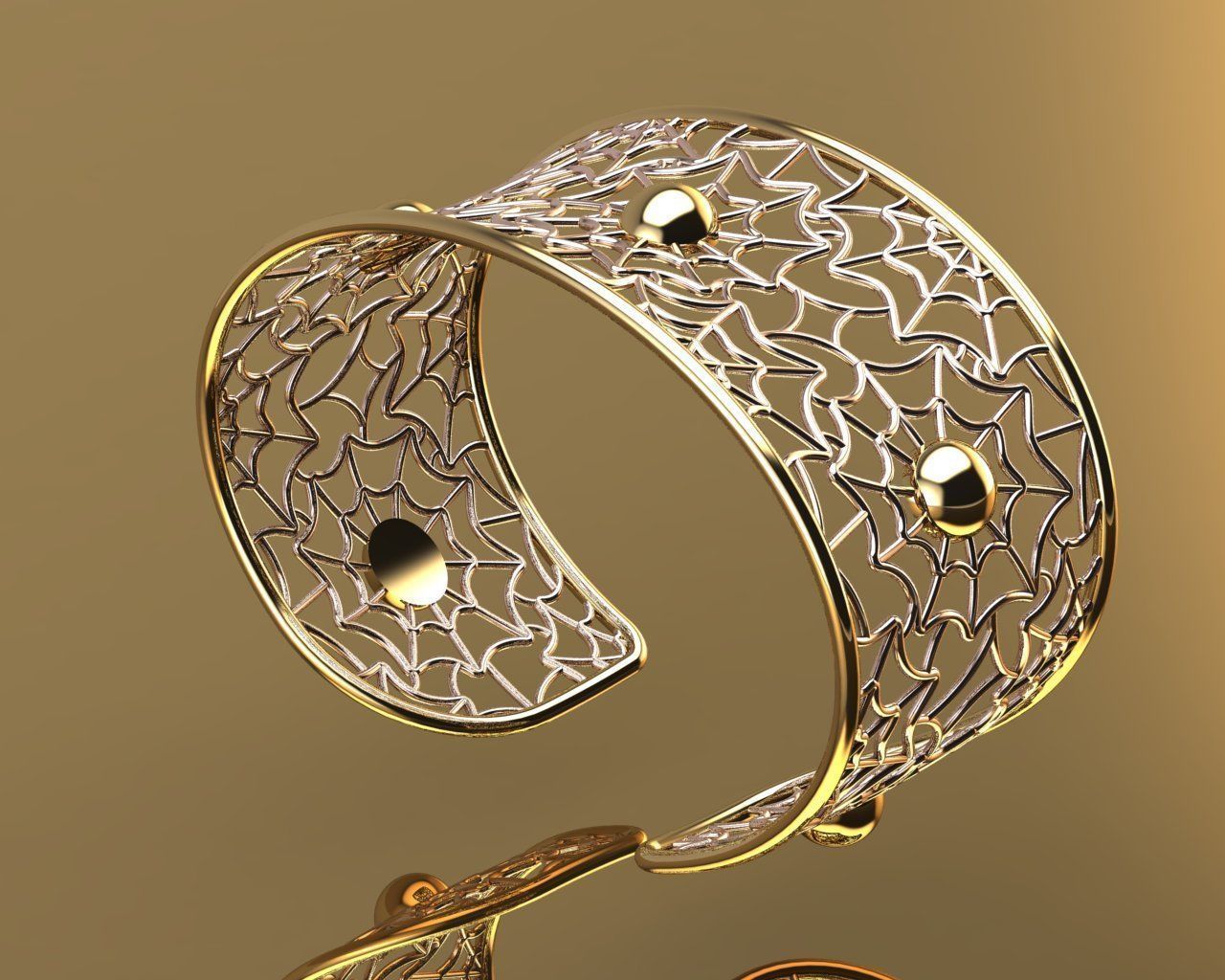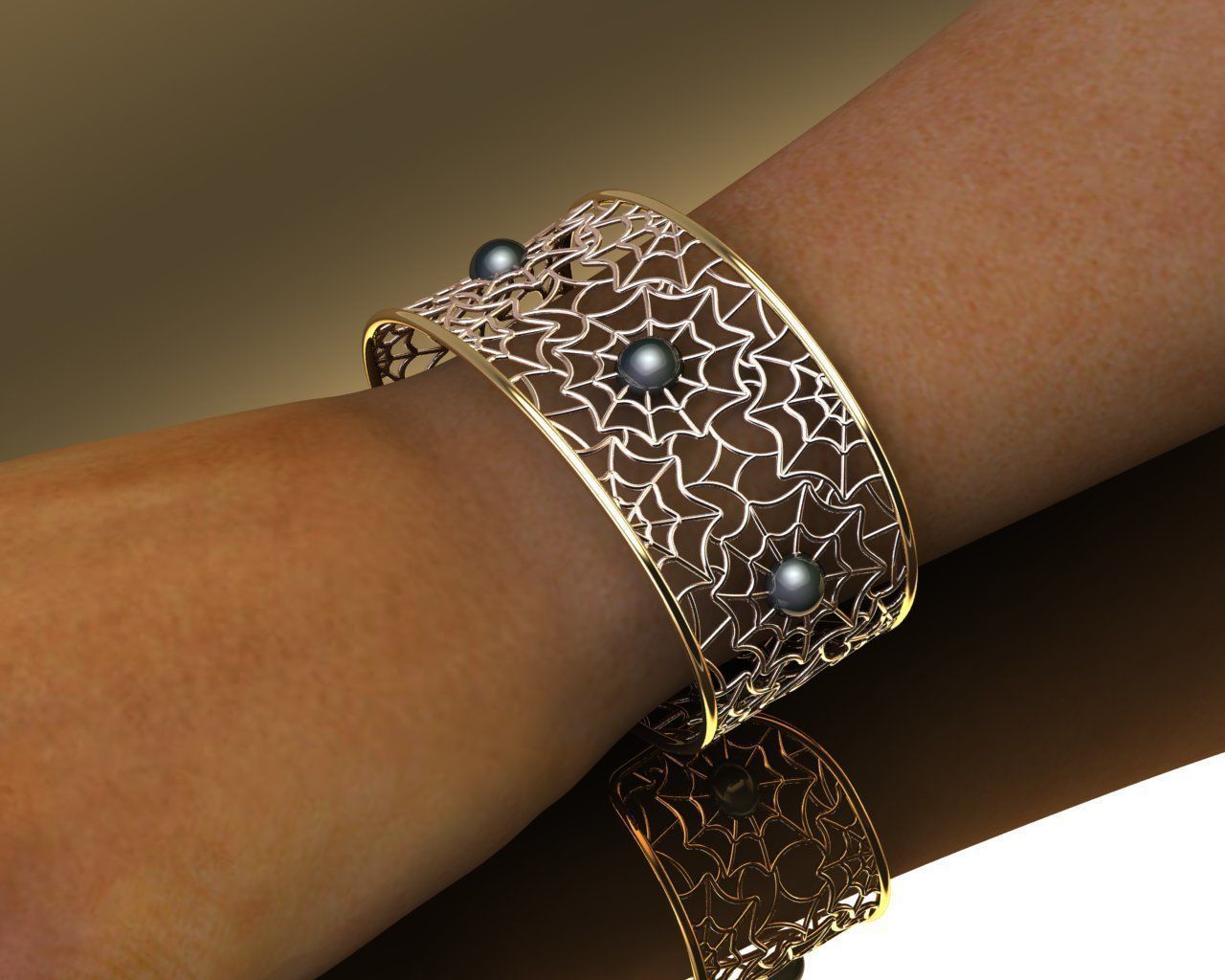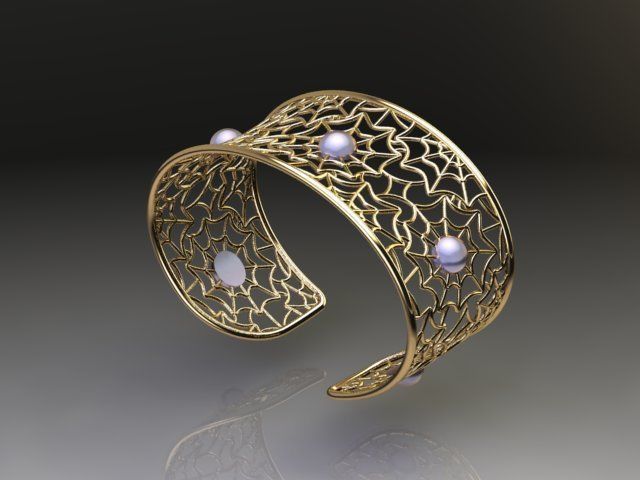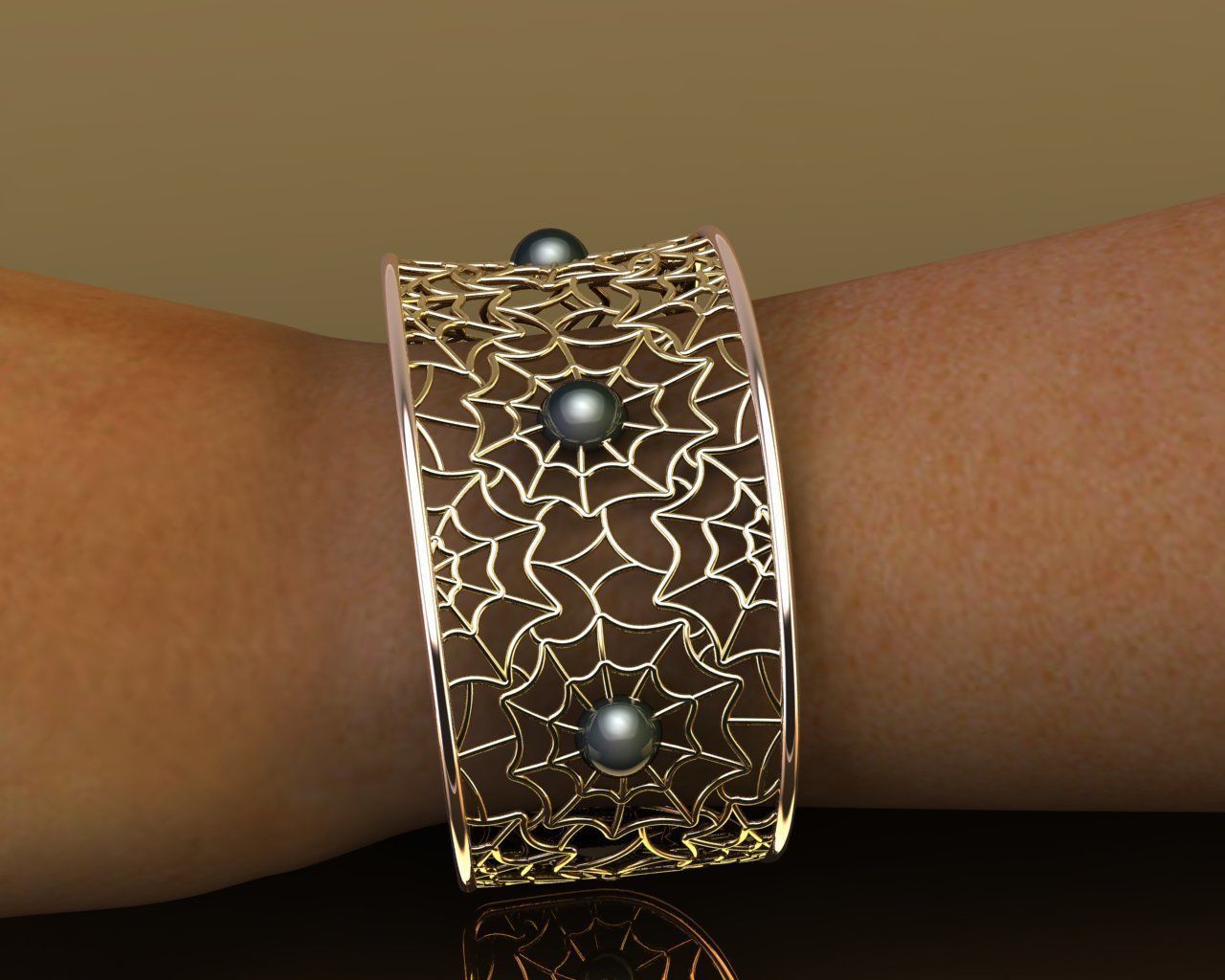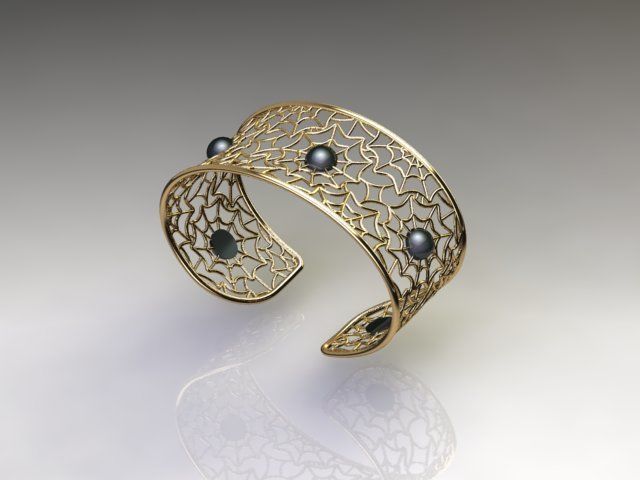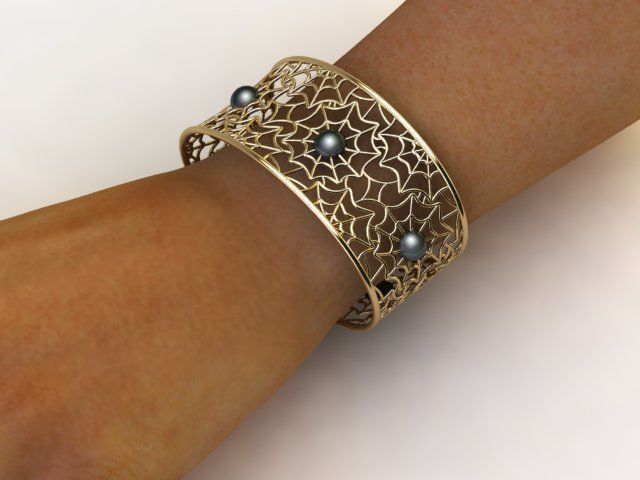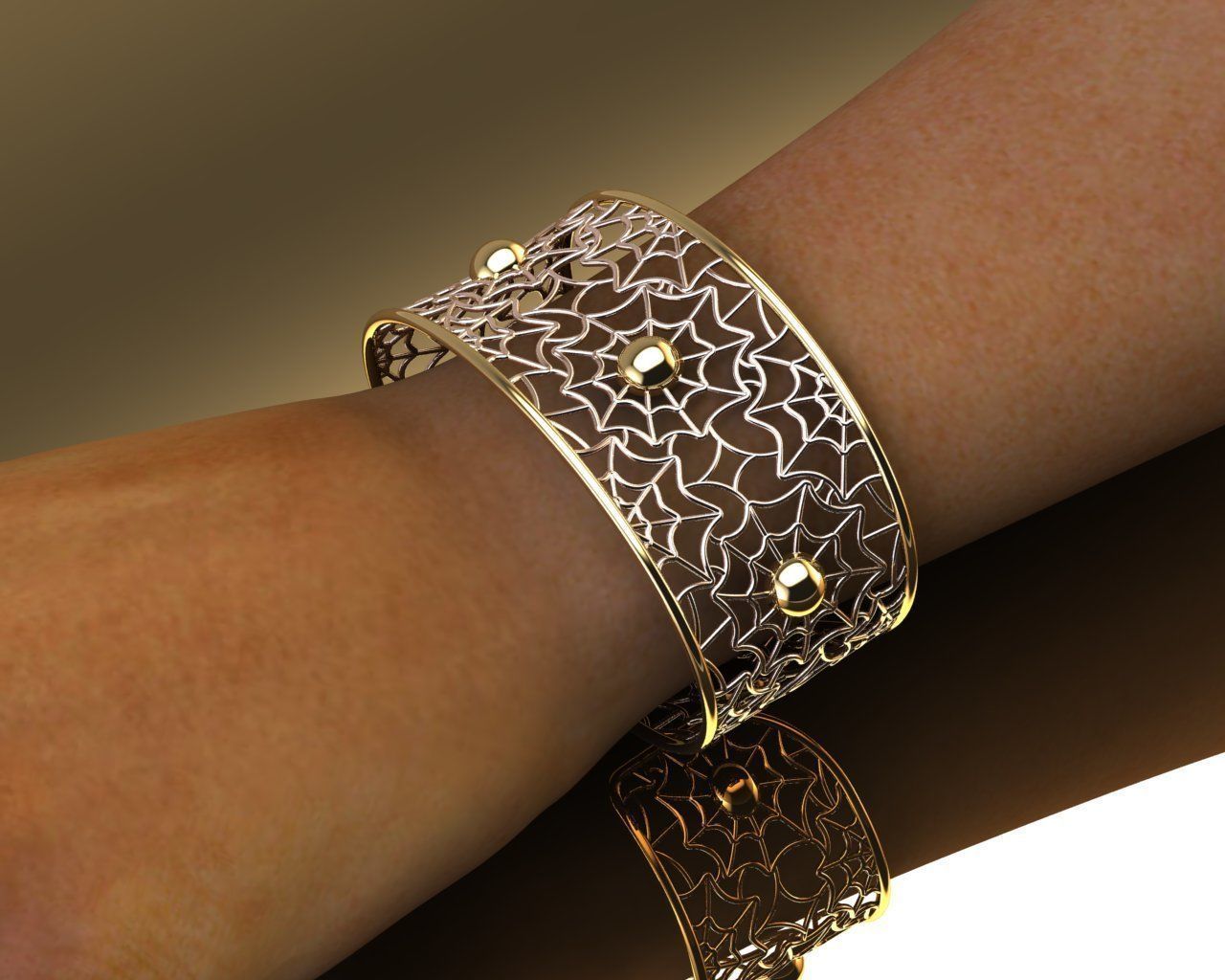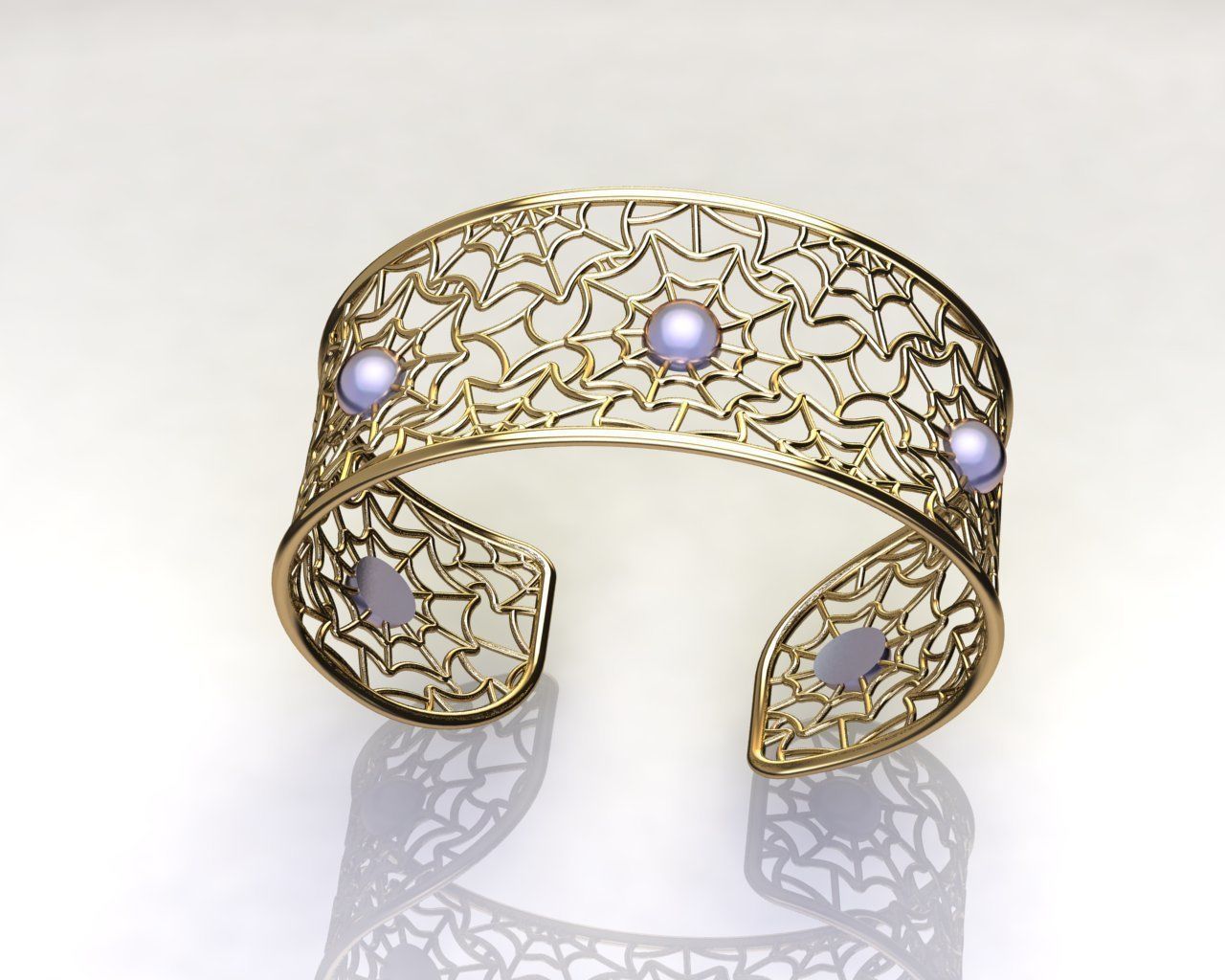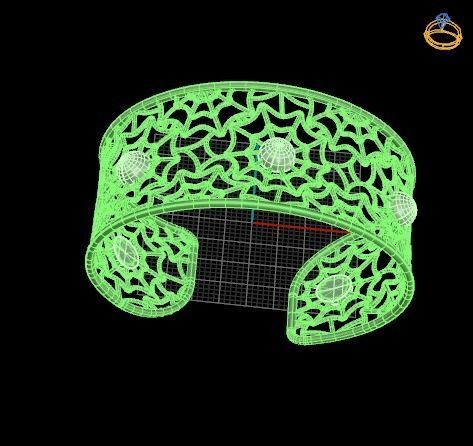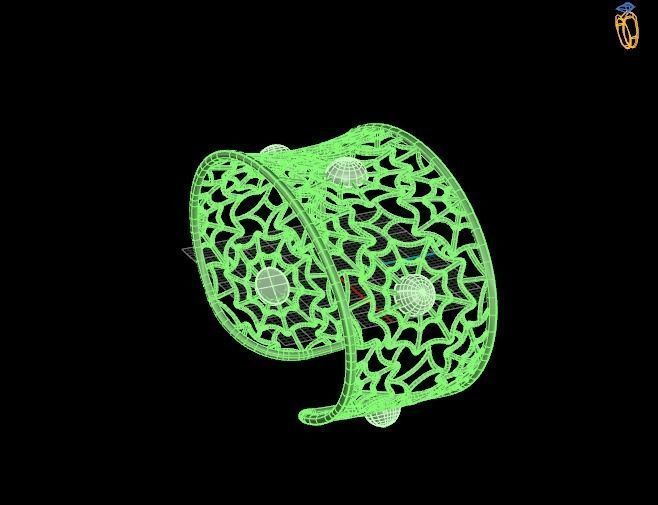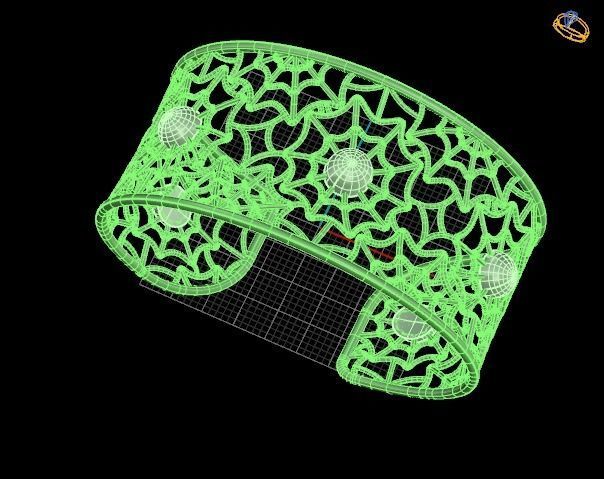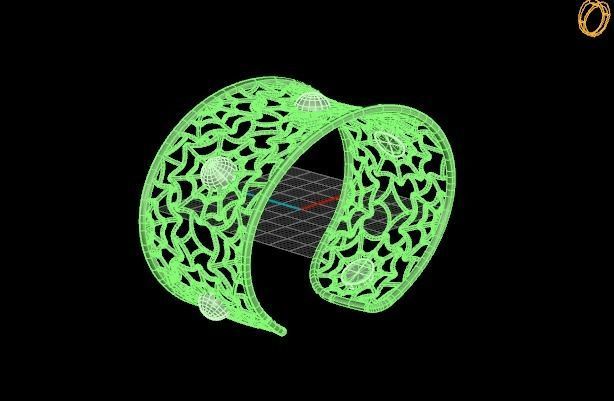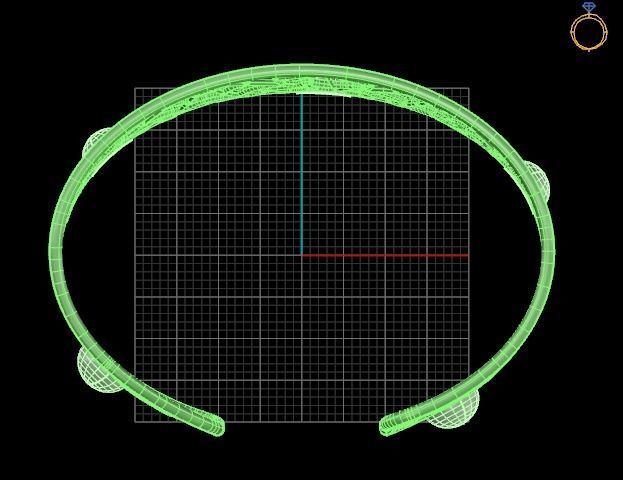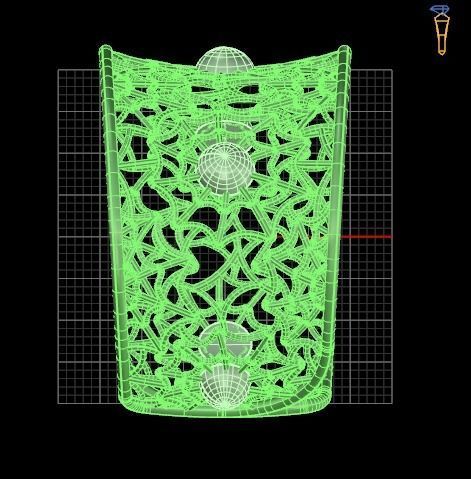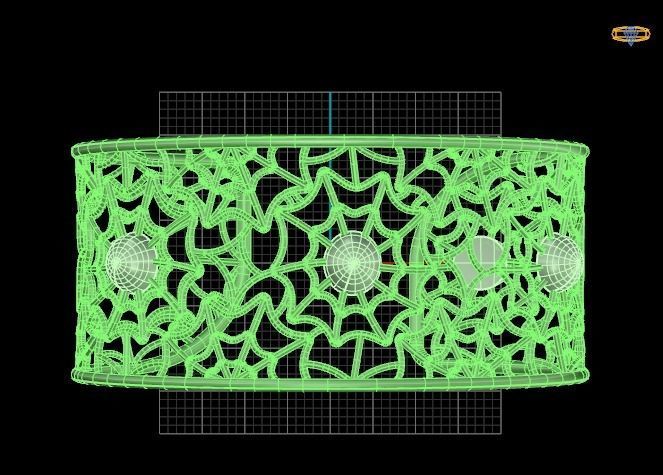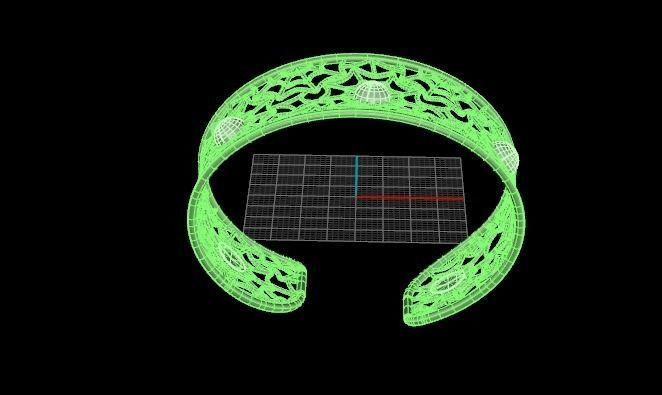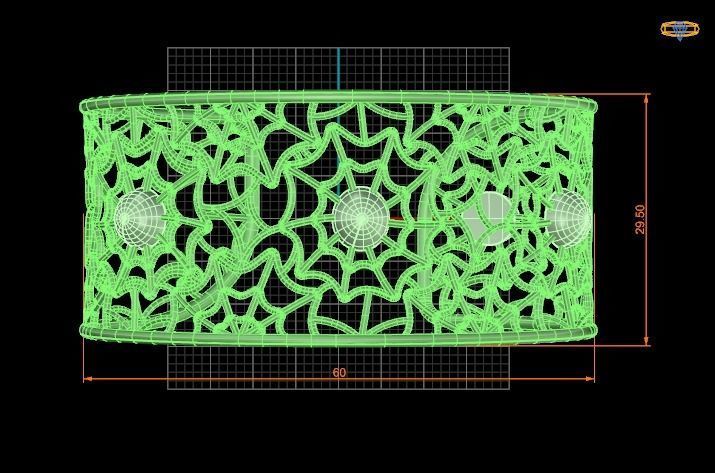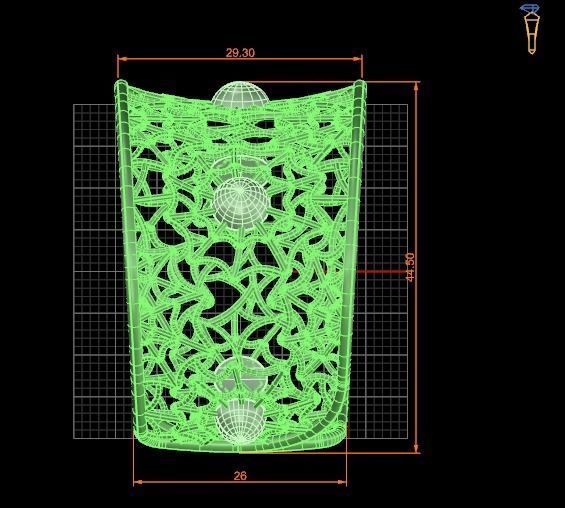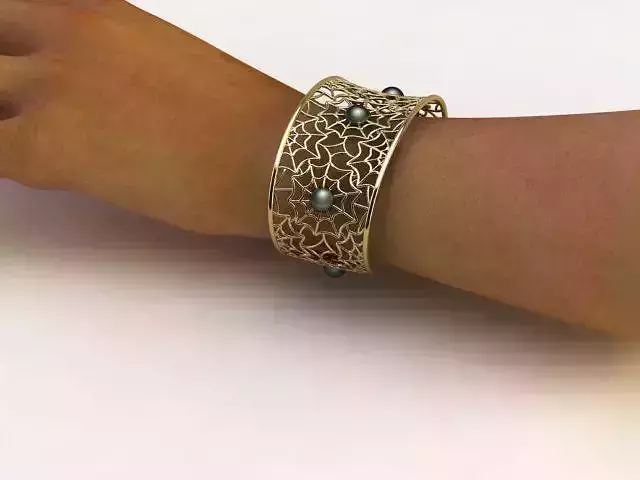
Bracelet Fashion 3D print model
Jewellery (or jewelry in American English) consists of decorative items worn for personal adornment, such as brooches, rings, necklaces, earrings, pendants, bracelets, and cufflinks. Jewellery may be attached to the body or the clothes. From a western perspective, the term is restricted to durable ornaments, excluding flowers for example. For many centuries metal such as gold often combined with gemstones, has been the normal material for jewellery, but other materials such as glass, shells and other plant materials may be used.Jewellery is one of the oldest types of archaeological artefact – with 100,000-year-old beads made from Nassarius shells thought to be the oldest known jewellery.[1] The basic forms of jewellery vary between cultures but are often extremely long-lived; in European cultures the most common forms of jewellery listed above have persisted since ancient times, while other forms such as adornments for the nose or ankle, important in other cultures, are much less common.Jewellery may be made from a wide range of materials. Gemstones and similar materials such as amber and coral, precious metals, beads, and shells have been widely used, and enamel has often been important. In most cultures jewellery can be understood as a status symbol, for its material properties, its patterns, or for meaningful symbols. Jewellery has been made to adorn nearly every body part, from hairpins to toe rings, and even genital jewellery. In modern European culture the amount worn by adult males is relatively low compared with other cultures and other periods in European culture.The word jewellery itself is derived from the word jewel, which was anglicised from the Old French jouel,[2] and beyond that, to the Latin word jocale, meaning plaything. In British English, Indian English, New Zealand English, Hiberno-English, Australian English, and South African English it is spelled jewellery, while the spelling is jewelry in American English.[3] Both are used in Canadian English, though jewellery prevails by a two to one margin. In French and a few other European languages the equivalent term, joaillerie, may also cover decorated metalwork in precious metal such as objets d'art and church items, not just objects worn on the person.A bracelet is an article of jewellery that is worn around the wrist. Bracelets may serve different uses, such as being worn as an ornament. When worn as ornaments, bracelets may have a supportive function to hold other items of decoration, such as charms. Medical and identity information are marked on some bracelets, such as allergy bracelets, hospital patient-identification tags, and bracelet tags for newborn babies. Bracelets may be worn to signify a certain phenomenon, such as breast cancer awareness, or for religious/cultural purposes.If a bracelet is a single, inflexible loop, it is often called a bangle. When it is worn around the ankle it is called an ankle bracelet or anklet. A boot bracelet is used to decorate boots. Bracelets can be manufactured from metal, leather, cloth, plastic, bead or other materials, and jewelry bracelets sometimes contain jewels, rocks, wood, shells, crystals, metal, or plastic hoops, pearls and many more materials.The history of Egyptian bracelets is as old as 5000 BCE. Starting with materials like bones, stones and woods to serve religious and spiritual interests. From the National Geographic Society, the Scarab Bracelet is one of the most recognized symbols of ancient Egypt. The scarab represented rebirth and regeneration. Carved scarabs were worn as jewelry and wrapped into the linen bandages of mummies. Myth told of the scarab god, Khepri, pushing the sun across the sky.In 2008, Russian archaeologists from the Institute of Archaeology and Ethnology of Novosibirsk, working at the site of Denisova Cave in the Altai Mountains of Siberia, uncovered a small bone fragment from the fifth finger of a juvenile hominin, dubbed the X woman (referring to the maternal descent of mitochondrial DNA),[1] or the Denisova hominin. Artifacts, including a bracelet, excavated in the cave at the same level were carbon dated to around 40,000 BP.In Bulgaria, there is a tradition called martenitsa, which sometimes involves tying a red and white string around the wrist to please Baba Marta in order for spring to come sooner.In Greece, a similar tradition, weaving a bracelet from a red and white string on the first day of March and wearing it till the end of summer, is called Martis and is considered to help protect the wearer's skin from the strong Greek sun.In some parts of India, the number and type of bangles worn by a woman denotes her marital status[2]In Sikhism, an iron bracelet is one of the most mandatory articles known as the Five Ks.In Latin America, Azabache Bracelets are worn to protect against the Mal de ojo, or evil eye. The evil eye is believed to result of excessive admiration or envious looks by others. Having newborn babies wear an azabache (a gold bracelet or necklace with a black or red coral charm in the form of a fist), is believed to protect them from the evil eye

